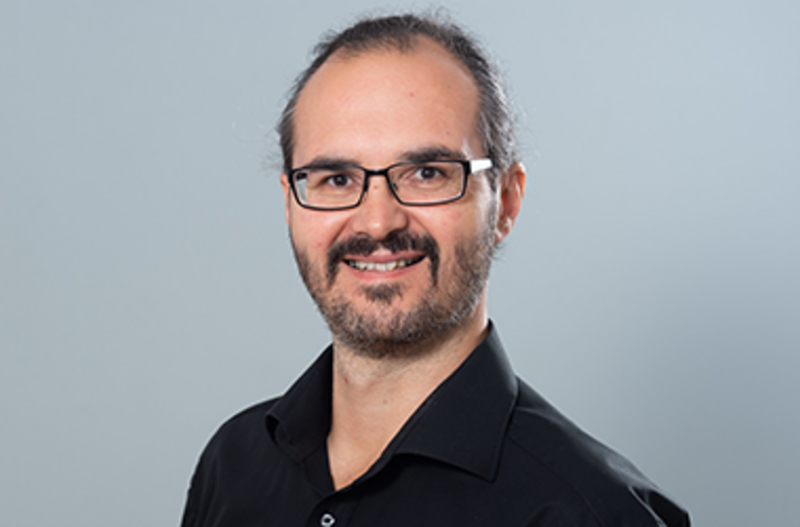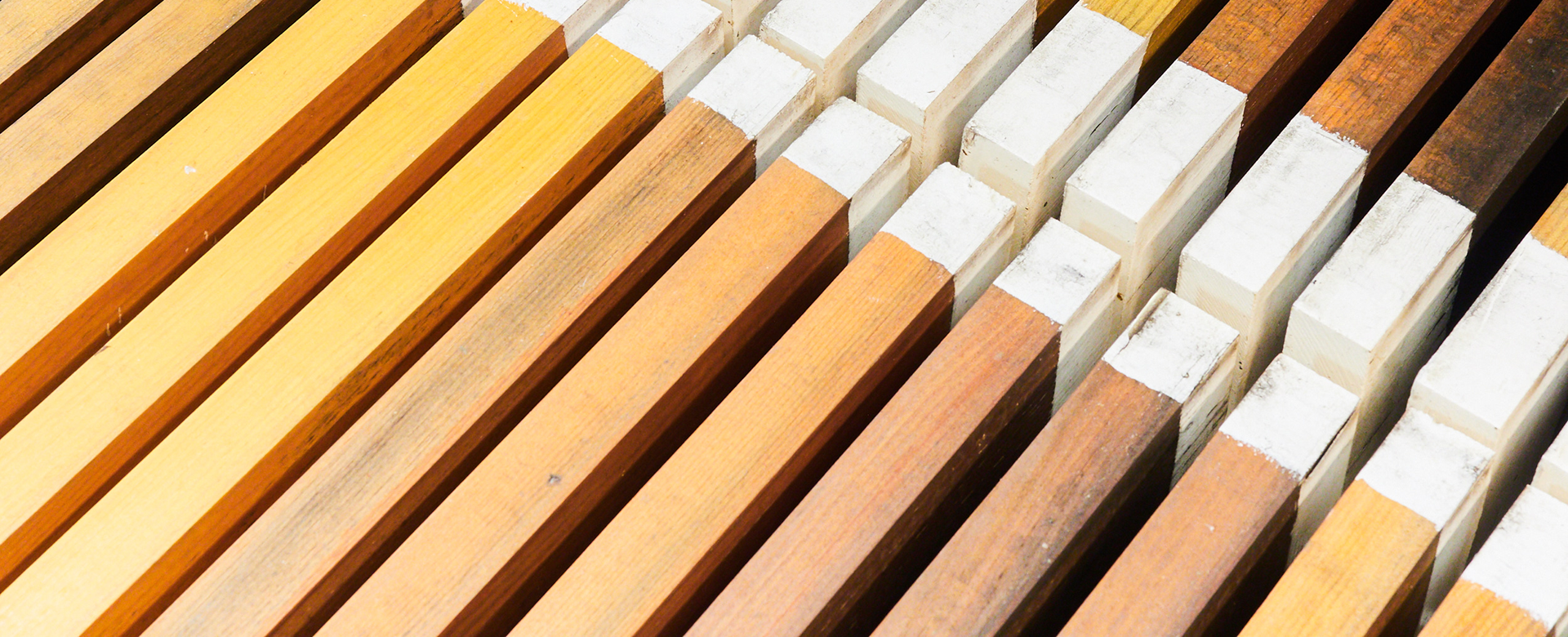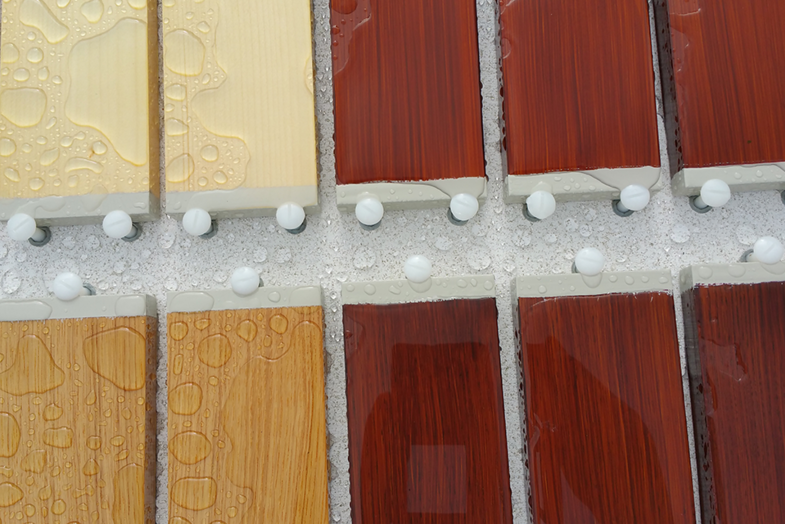The surface determines the appearance, the feel, and last but not least the durability of products. Coatings with lacquers, glazes, oils, and waxes require a high quality in products and their processing. We use accredited methods to test the physical properties of coating materials for wood and of industrial coated parts in all applications. These are primarily furniture, wooden floors, doors, wall and ceiling cladding in the interior, facades, terraces and balconies in the exterior as well as windows and exterior doors as climate-separating components. A surface laboratory, devices for artificial weathering and field test stands are available.
Outdoor wood
The wood is protected against the weather by coatings. EN 927-2 defines minimum requirements for exterior wood coatings, which are supplemented by national requirements for dimensionally stable components (windows and external doors). The most important test methods are:
- EN 927 series: Coating materials and coating systems for exterior wood
e.g. natural weathering, water permeability, artificial weathering, microfoam - ÖNORM C 2350 Coating materials for coating systems applied on dimensionally stable exterior building constructions of wood
e.g. adhesion, water vapor permeability, deformability, compatibility - ÖNORM B 3803 Coatings on dimensionally stable wooden outdoor building components
e.g. coating thickness, air bubbles in the coating film, compatibility - ISO 2808 Determination of film thickness
Furniture surfaces
Coatings increase the durability of wooden surfaces. ÖNORM A 1610-12 defines requirements for different areas of use. The most important test methods are:
- ÖNORM A 1605-12 Furniture surfaces
e.g. chemical resistance, behaviour in case of abrasion, behaviour in case of scratching loads, ...
Wood flooring
Criteria for sealing lacquers for on-site processing or the factory coating are defined in ÖNORM C 2354. Non-film-forming treatments with oils and waxes have to be treated separately, for which recognized HFA-internal methods are used:
- ÖNORM C 2354 Sealing materials
chemical resistance, scratch resistance, adhesion, deformability - HFA AA O 128/IHD-W 480 Wooden floors treated with non-film-forming substances
Behaviour in case of wet abrasion - HFA AA O 128/IHD-W 481 Wooden floors treated with non-film-forming substances
Resistance to cold liquids
Contact persons
Surfaces, Exterior wood coatings, HFA inspected mark

Furniture surface, floors

Furniture surface, parquet

Surfaces and microscopy

Surface analysis

Exterior wood coatings, terraces, facades, windows, balconies

Our services
EN 927 Coating materials and coating systems for exterior wood
We offer all tests to prove compliance with the requirements for the classes regarding stable, semi-stable and non stable components.
Furniture surfaces
All essential tests for demonstrating compliance with the requirements for surfaces for kitchens, tables, chairs, cupboards, office and public furnishings are offered.
Wood flooring
We test sealers, oils and waxes as well as factory-coated surfaces for living and public areas.
Available infrastructure:
- Artificial weathering QUV
- Artificial weathering Xenon
- Outdoor weathering
- Abrasion device
- Contact angle measuring device
- Colour and gloss measuring devices
- Colour calibrated scanners
- UV/VIS and FTIR Spectroscopy
- Optical and scanning electron microscopy





















